
If you’re tired of trying to scare away moles with rotten fish and firecrackers exploding in the animals’s moves, then it’s time to look at the problem wider - today there are much more effective remedies for moles in a summer cottage, it’s important only to correctly understand the variety and choose those that really work on practice.
But with the choice of effective means, many summer residents just have difficulties. Someone does not want to bother too much on this subject and to understand in detail the problem - it is much easier to pour cat urine or kerosene into minks, in the hope that, perhaps, it will help. And only when the site becomes molested so much that it turns into a kind of tank landfill, when there are more beer cans planted on pegs and designed to scare away pests than landings on the site - then the most favorable time comes to experience more effective means, about which we’ll go ahead and talk in more detail.
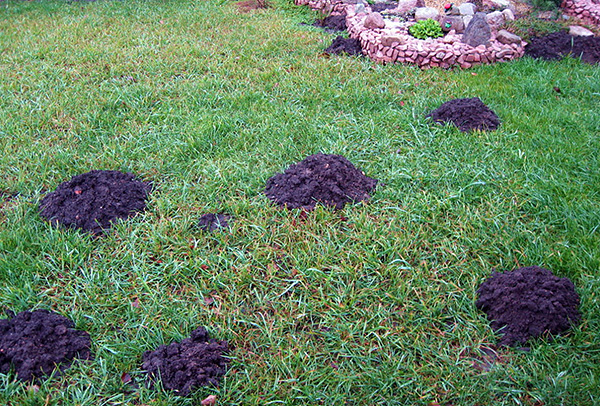
Below is a detailed overview of the most popular and affordable means of moles, including very effective ones. Perhaps, having studied this information and putting it into practice, you will finally be able to cope with moles in the summer cottage already this season and not know the problems with them in the future.
Namely, they will consider:
- Effective means of catching moles;
- Repellents;
- Specific means of exterminating and scaring away moles;
- As well as means of mechanical protection of the summer cottage from the penetration of new moles from the outside.
But first things first…
Mole traps
It is no exaggeration to say (and practice confirms this) that traps are the most effective means of combating moles in the area. When used correctly, they can get rid of these animals in the garden in most cases.
Traps are also good because they give a visible and, so to speak, unambiguous result: if the mole is caught, then the result immediately becomes obvious. This trap compares favorably with deterrents, in the application of which the gardener has to guess whether the deterrent has worked, or not, the moles have gone, or simply hid, staying in the summer cottage (or they have left, but to the neighbors, and will soon be back).
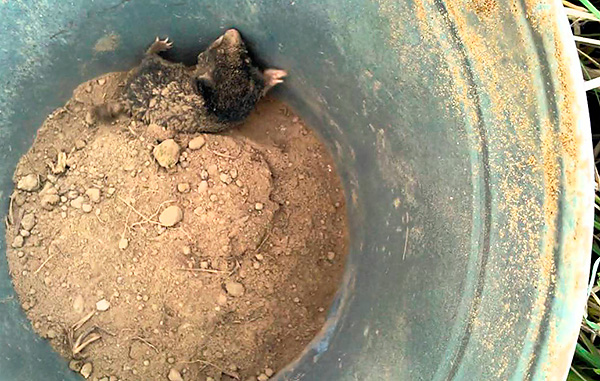
Perhaps the main drawback of the traps is the relative complexity of their use. To install the tool you still need to be able to correctly place it on the site, and for this you have to dig up the mole's moves. It is also important that the traps do not provide absolute protection against moles in the country - they can only catch animals already on the site and periodically coming from outside.
On a note
In addition, when using traps, the gardener is forced to somehow contact the animal. For example, a mole needs to be taken out of a live trap and then taken out of the cottage area, which can be difficult for people who are afraid of small animals. And various traps and snares kill moles, often in a cruel and painful way, which is unacceptable to many gardeners, because it is not humane.
Let us now consider which traps for moles are most often used in practice.
Live traps and their features
Mole traps operate on a simple principle: the animal easily falls into the trap, and can no longer get out of it.
Typically, such means of catching moles are sold in two versions:
- A pipe trap installed in the course of a mole. Another name is Solomon's trap. The animal easily raises its door, penetrates inward, but cannot open the door to get out.The price of such a mole head is 400-1200 rubles, depending on the design and the manufacturer. However, you can make such a remedy for moles with your own hands - from a plastic water pipe or even from ordinary plastic bottles;

- The pit trap, which is a pan, bucket, a wide plastic bottle or a glass jar, buried under the course of the mole. The animal simply falls into it and cannot get out. It is made by hand.

These seemingly very simple traps are actually very effective means of moles: when used correctly, it is often possible to rid the cottage of pests in a fairly short time. The insufficient effectiveness of using traps and a long struggle are usually associated with the wrong choice of location for installing live traps.
Feedback
“We were advised from moles in the country to have a pipe trap. She stood on the Internet for about 500 rubles, bought it, her husband dug it in, and lo and behold, after 2 hours the mole caught it! I thought that they only crawl at night. His husband took him somewhere to the river and released him there. We didn’t have any more all summer. Apparently, only one mole made all these holes for us ... "
Eugene, Pskov
In fairness, I must say that the use of live traps is a rather troublesome affair (especially if you really focus on the most humane means of fighting moles):
- First, the mole head pipe must be carefully dug into the course so that it seems to continue it. As for the pit trap, the “pit” should be buried even deeper, which requires some effort. If the animal is not caught for a long time, then it is necessary to change the location of traps in the area;
- Secondly (and this is the most troublesome), live traps should be checked regularly - at least once every 4-5 hours. The fact is that moles have a very fast metabolism, and if they do not feed, they will die within 18-24 hours. In this case, a live-trap from a humane means of combating moles would turn into a real torture chamber, since a caught animal would die a hungry death from starvation;
- Thirdly, the mole caught must be taken out of the site to a distance of at least 1 km - then he certainly will not come back.
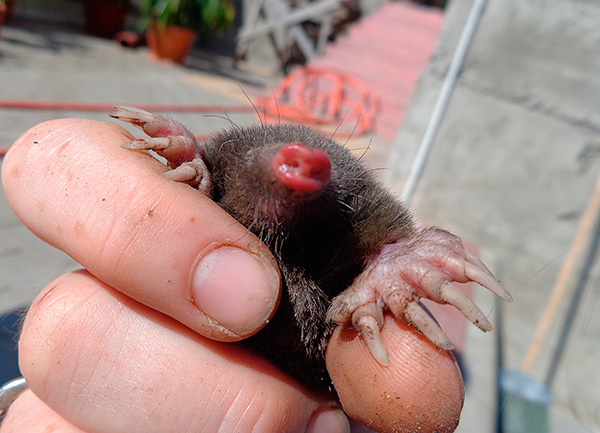
It is understandable that many gardeners are frightened off by such difficulties associated with the use of live traps.
On the other hand, the use of live traps against moles is humane in relation to animals and completely safe for people to control pests. In general, live traps can be used in almost any case - these are effective remedies for moles in the garden for those site owners who want to quickly get a reliable result without killing the animals themselves.
Lethal traps and traps
The main advantage of any tool from this group is the combination of high efficiency (typical for traps in general) with ease of use. If you correctly install the trap, then without additional effort and loss of time on the part of the gardener, it will simply kill the mole.
The main disadvantage of traps of any designs is their lethal effect. Many do not really think about this, but in reality killing moles just because their house in a certain way intersects with your summer cottage is unjustified cruelty.
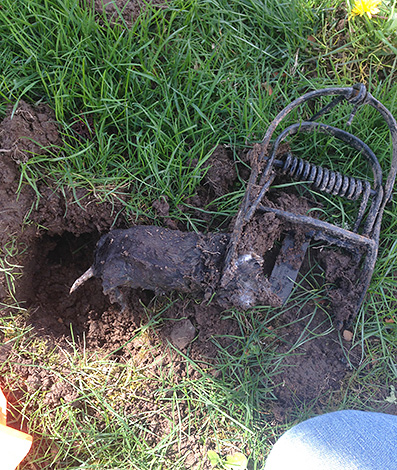
There are no situations in which traps work, and live traps are ineffective - another thing is that the owner of the site is simply too lazy to catch the animals alive and take them one kilometer from the cottage, when it is much easier to throw the corpse in the trash. In addition, there are also some kind of sadists who certainly want to kill the animal, often in a sophisticated way.
But back to "our traps." The funds in this group include:
- Plunger traps, similar to a small vise, that fire when the animal is in between. They squeeze the mole and break his bones;

- Harpoon traps piercing the animal with sharp knitting needles;

- Wire mole catchers - strangle a mole, squeezing a body;


- Simple crush (mousetraps), which are usually used to destroy mice.

Means of other designs are also known, less popular - their number is constantly growing, and new options and models periodically appear on the market.
On a note
Electricity and electric mole traps are practically not used, unlike electric rat traps. The fact is that it’s quite problematic to supply electricity to the garden with electricity, while mechanical traps are no less effective and kill the animal even more reliably than electric current.
Most lethal mole traps are inexpensive, and some (for example, wire) are one of the most inexpensive means of moles in general: one such trap costs only about 50 rubles. However, modern tools from this group, especially imported ones, can be very expensive.
A short summary: lethal traps in efficiency are quite similar to live traps, although they are somewhat simpler to use (you will not have to remove the animals from the site, because the trap will supply you with corpses). However, before using such funds from moles, it is worth considering once again - is it really much easier for you to kill moles than to use other, more humane methods to combat them.
Mole Fishing Hooks
This tool combines the shortcomings of the previous ones, but is devoid of their merits. The principle of operation of such tackle is as follows: on a fishing line, 2-3 triple fishing hooks (tee) are lowered into a mole in the course of the mole, the outer end of the fishing line is tied to a peg driven into the ground, or simply to a strong stick lying on the ground.

The mole, passing through the tunnel, clings to the hooks with its skin, and the fishing line tied to the stick does not allow the animal to go deep. In the future, the gardener digs a move, pulls the animal by the fishing line to the surface and kills.
One of the even more lively variants of this method of catching moles is to string earthworms onto fishing hooks so that the mole catches its mouth with their mouth, like a fish.
Well, there are two advantages to this method of fighting moles: it really works and is very inexpensive.
The disadvantages of the traps of lethal and non-lethal actions in this method are as follows:
- The capture of moles using fishing hooks is characterized by increased cruelty to animals: not only does the mole receive injuries from hooks that dig into its body, tear the skin and muscles, it’s still necessary to finish the tortured animal after capture;
- Sometimes a mole at the cost of significant injuries breaks off the hook.
So if the use of live traps is completely unacceptable to you due to the increased complexity, then it is better to use traps of lethal action - they at least immediately kill the animal, without tormenting it before death.
Repellents
In some cases, agents that repel moles work no less efficiently than traps, but more often they are inferior to them in effectiveness, and sometimes they do not work at all. The principle of their action is that moles are afraid of strong smells and sounds and try to leave the territory not comfortable for life.

The main advantage of repellents in comparison with trapping means is maximum ease of use combined with the absence of the need to contact the animal itself or its corpse.
The main drawback of repellents is that you cannot predict in advance whether a particular repellent will be effective in your situation. Only a practical test can give an answer: in some cases, rotten fish or a cheap electronic repeller completely and permanently relieve the cottage from moles, while in other cases the same effect may have absolutely no effect.
And two more important nuances:
- Mole scaring does not always happen quickly. As practice shows, sometimes even the most modern electronic means of combating moles drive animals out in only 1-2 weeks;
- It is not always possible to understand exactly whether the tool worked or not: the mole can remain in the summer cottage, but simply do not make new heaps, using the already existing feed moves. Outwardly, in this case, the impression will be that the animal has left the cottage.
Thus, it is advisable to use deterrents even before catching the animals - as an experiment: if you manage to scare away moles, then there will be no need for capture at all. And if it does not work out, then it will already be possible to move on to a more troublesome version of the struggle with the use of traps.
It is most rational to scare away moles when one of the neighbors has removed pests with a repeller - in this case, it is highly likely that the same tool will work in your area.
Electronic and homemade sound mole repellers
Ceteris paribus, scaring away moles with sounds (and vibration) gives an effect more often than trying to scare away animals with smells. This is due to the following reasons:
- Sound in the soil spreads better and further than smells. For example, sounds from a medium-power electronic repeller installed in the middle of a summer cottage will scare away moles within a radius of about 10 meters;
- The odor intensity of many odorous substances decreases quite quickly - the aroma disappears in the air. While the intensity of the sound exposure of the same electronic repellers does not decrease until the batteries are dead.
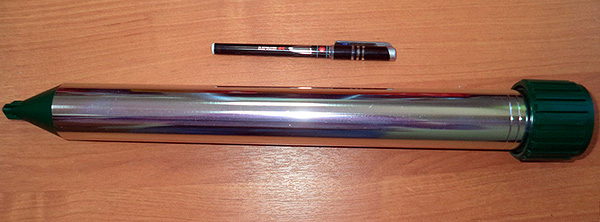
Of the sound repellents against moles, the most commonly used are:
- Electronic repellers that create audible sound or ultrasound, as well as mechanical vibration. They work most often, but are quite expensive, and their price approximately reflects the quality of the device and its durability (some Chinese models fail after the first rain);

- Various homemade turntables, weathercocks, and bottles buried in the ground that ring, rattle, or buzz in the wind. They also work well sometimes, especially with good performance and proper use;



- The original means of scaring moles away with sound are regular loud music in the country (they say that hard rock works better), a radio or an alarm clock in a pan buried in the ground;
- The reed stalks stuck in molehills and buzzing in the wind. This is the least effective remedy, but sometimes it even helps.
On a note
There are cases when the mole left the cottage area on which the lawn mower or water sprayer worked. But such precedents are isolated.
The above repellents are very easy to use: it’s simple enough to place them in the country, and then they will work on their own without the participation of a gardener. In this case, you will not have to get living moles by hand, or carry their corpses around the garden.
Another important advantage of such devices is that with their help you can protect yourself from the penetration of new moles to the cottage from the outside (though not always). Traps do not protect against this, therefore, with an abundance of moles in the district, pests can occasionally again ramp up on the site. If you put the deterrents in such a way that the boundaries of the summer cottage fall into their area of operation, then moles sometimes do not enter the territory of the summer cottage at all.
The main drawback of the most modern electronic repellers is their rather high price. And the main drawback of self-made deterrents is the reduced efficiency combined with the often ugly appearance: turntables, weathercocks and, moreover, empty beer cans on the reinforcement do not decorate the site.

Feedback
“I have always been distrustful of all these electronic things, the money is considerable, and it’s not so hot. Here, I put a few beer cans on pegs. And you know, this is the best remedy for moles. I put them in the spring, and in April and May there were no moles anymore, not a single one appeared during the year, although all the neighbors were crying from them.So, the main thing is to do it soundly, not a blunder, but so that everything is fine. ”
Oleg, Zelenograd
On sale mole repellers are presented very well today, perhaps better than other types of products. Prices for them range from 500 to 5000 rubles. To combat moles, it is advisable to choose those that generate signals of varying frequency, duration and frequency, that is, they work in random sound playback mode (Random mode so that moles do not get used to it), and also generate mechanical vibration due to the micromotor with an eccentric .
Mole repellent odors
As noted above, such tools are on average less effective than sound repellers, but usually more affordable.
For example, you can buy special balls from moles Detia - a German remedy that scares the animals away with the smell of lavender. Also on sale are tablets from moles Alfos, which, when in contact with soil moisture, unpleasantly smelling phosphine gas.

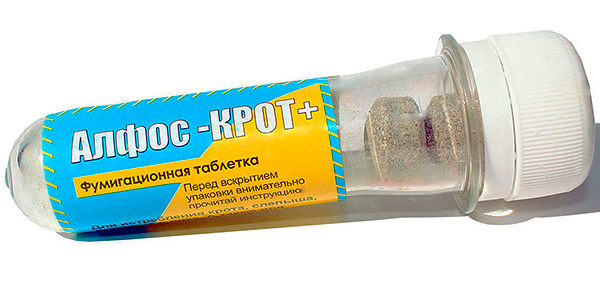
By analogy with Alfos tablets, they often try to use carbide from moles in the country. Upon contact with moisture, carbide emits not only acetylene gas, but also insignificant amounts of the same phosphine (technical calcium carbide always contains an admixture of calcium phosphide, which gives phosphine gas, which has an unpleasant odor, in contact with water).
On a note
When handling carbide, particular care must be taken - a mixture of the resulting acetylene with air can explode strongly even from a small spark.

Of the popular means of scaring away moles, rotten fish, feces, cigarettes, kerosene, turpentine, perfumes (or cologne), onion husks and the corpses of already caught moles are usually used - in general, everything smells strongly.
The effectiveness of odorous products is achieved only with diligent and systematic use. If you just bury fish heads once in two or three places, then with high probability it will not give a result at all.
As in the case of sound repellers, strongly smelling agents may not immediately have an effect, but only after a week or two. As a result, these funds are inferior in effectiveness to all the previous ones, however, they are very popular because of their low cost and availability.
Intimidating plants as remedies for moles
Of the systematically and widely used anti-mole agents, planting certain plants in the garden is the least effective option. There are no statistically significant data that a certain plant really reliably repels moles.
Nevertheless, the plants that repel moles are popularly considered:
- Bulbous - onion, garlic, daffodils;
- Black beans;
- Grouse imperial;
- Marigold;
- Castor oil.

They are usually planted around the perimeter of the garden plot or along the borders of the beds. Obviously, such a remedy will not give a quick effect and in 2-3 days they will certainly not get rid of moles. Therefore, they are often used to protect the garden, combining the fight against moles with the decoration of the site.
Specific methods for exterminating and repelling moles
There are also quite specific means of fighting moles, which are rarely used and only with the great desire of the gardener to "experience something new."
Among these tools, for example, include:
- Chemical agents from moles are usually in the form of various poisons (primarily those that poison mice and rats). As the poisoned bait, earthworms sprinkled with rat poison are most often used. In the West, ready-made baits in the form of the same worms are sold. If you suddenly nevertheless decide to buy poison for moles, then it is worth bearing in mind that if mistreated, pets and wild birds can suffer from it;

- Sulfur and other smoke bombs. Such a tool is ignited, laid in the course, and a hole in the ground is tightly covered on top with a bucket or sheet of plywood.The smoke, spreading along the courses, will scare away the mole, or poison it. As you know, this is far from the most humane way of fighting moles. In addition, smoke from sulfur and insecticide-repellent smoke bombs is harmful to soil microorganisms, and when used in the garden, beneficial insects, mushrooms and many other soil inhabitants will die in large numbers;

- Samostrel - difficult to manufacture and use, and most importantly, a dangerous tool. It works, according to the signal of the motion sensor, firing shot at the mole. In general, self-arrows are a cruel means for those who are willing to spend a large amount of time and energy to create a savage way of controlling pests;

- Exhaust gas - also often try to use against moles. They drive it into the passages through a hose connected to the exhaust pipe of the car;

- Pouring mole holes with water - only in rare cases allows you to destroy moles in the area, but often leads to subsidence and the creation of a kind of swamp;

- Dogs or cats - some of them catch moles in a passion for hunting, and dogs like fox terriers and dachshunds do this most effectively. The method is unpleasant in that, when hunting, animals usually dig more holes than moles themselves do;

- Firecrackers that lay in the moves, before the explosion, covering with a bucket. The blast wave propagating through the underground passage will scare or even stun the animal. Sometimes firecrackers are placed on a small container with ammonia, which ensures the spread of finely dispersed ammonia aerosol along the courses.

Feedback
“The mole lived in our garden for two years, but we were not particularly worried while it was picking in the garden. And this year he got out on potatoes and went on. Then I had to fight. We bought two Ecosniper repellers and put them in different places on the site. And as a result, the mole left, now even in the garden it does not dig. I think I’ve gone to the neighbors. ”
Alena, Dmitriev
Means of mechanical protection of the site from moles penetrating from outside
In addition to sound repellers, to prevent the entry of moles into the area, you can also use much more reliable means of the barrier type:
- Mesh, slate, strip foundation, roofing material, buried and fitted close to each other boards or a trench, covered with gravel. All these barriers are installed around the perimeter of the site, which prevents the mole from entering the territory;

- They also use a special net from moles, laid horizontally below the soil surface at a depth of 5-10 cm. Even if the mole is on the site, he cannot get to the surface through the net, which means he will not be able to arrange a molehill. This solution is best suited for lawns, but for planted gardens with an abundance of beds it is not always suitable.

Mechanical fencing will not allow to get rid of moles already living on the site. However, they are practically indispensable if you need to have guaranteed protection against animals from entering the territory from the outside.
Even if it was possible to get rid of moles by other means, it makes sense to use barriers so that the fight does not have to be repeated in the future (though such protection of the site is quite an expensive pleasure).
If you have personal experience with using these or other means to fight moles in a country house or garden, be sure to leave your review at the bottom of this page (in the comments box). Perhaps this information will help someone solve the problem in a similar situation.
An interesting video about the fight against moles
German bio mole remedy Detia

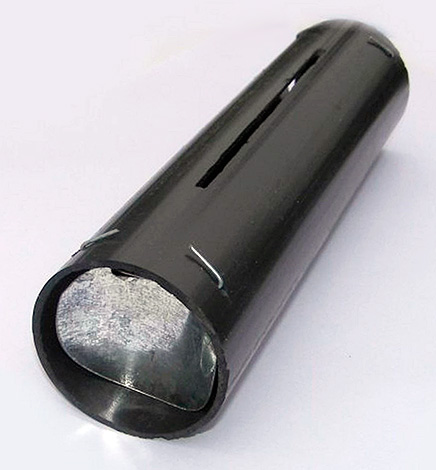
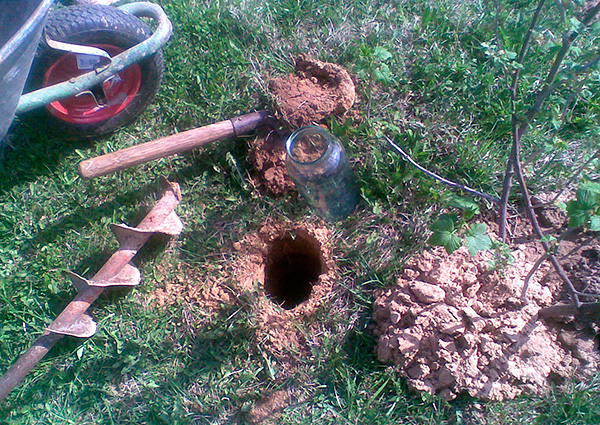
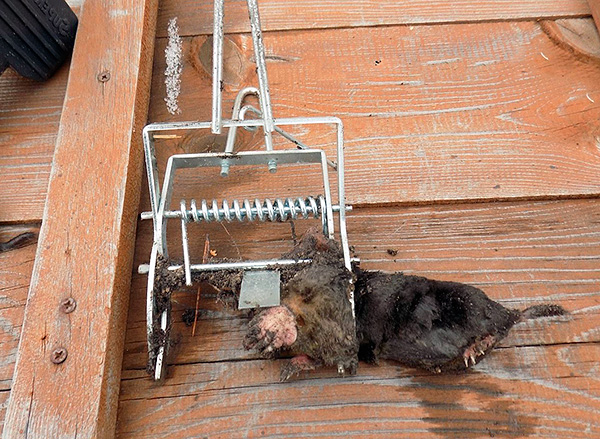
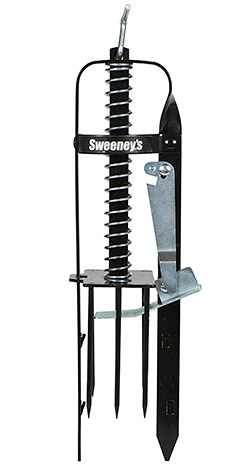
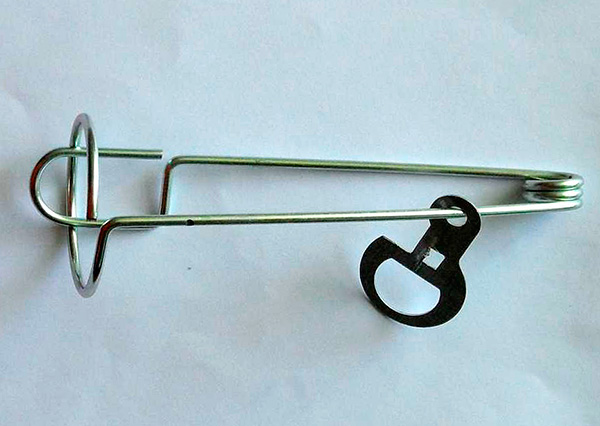

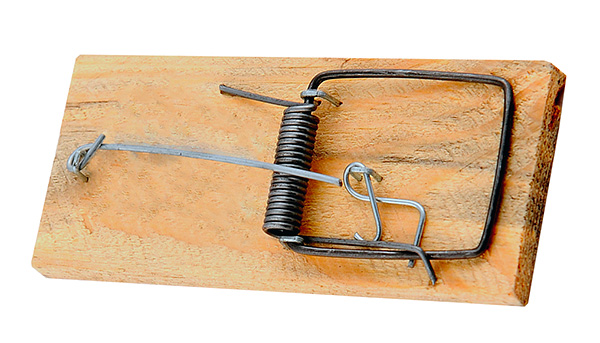
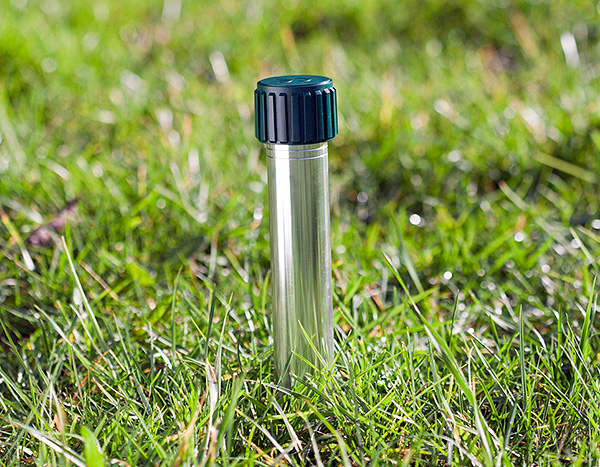


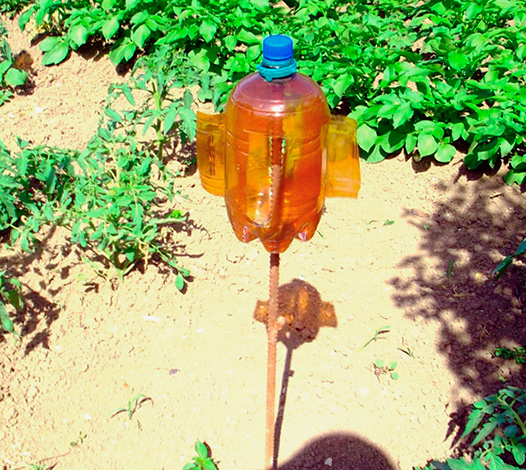

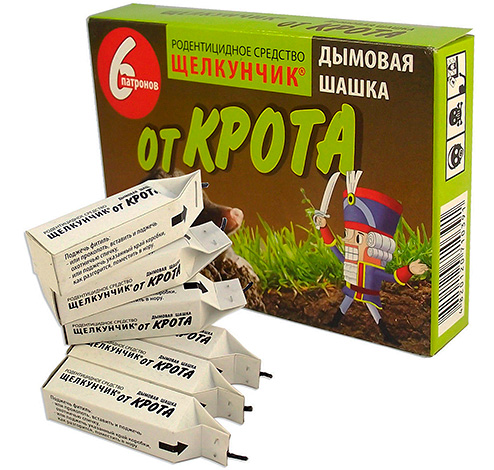

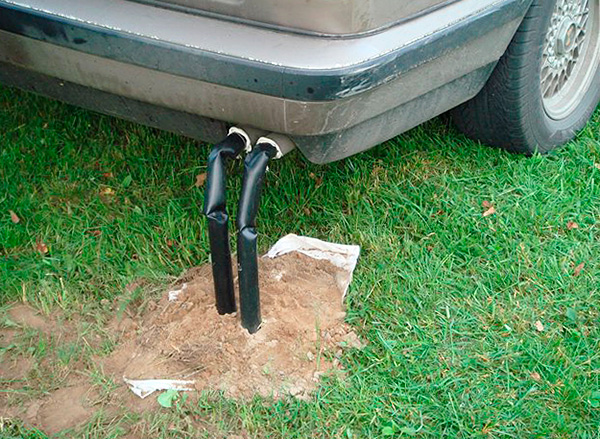



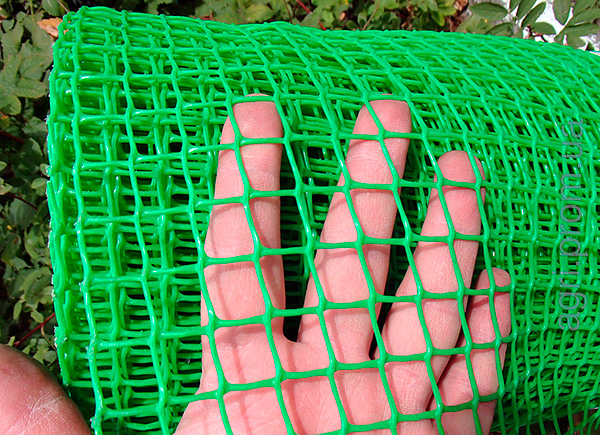
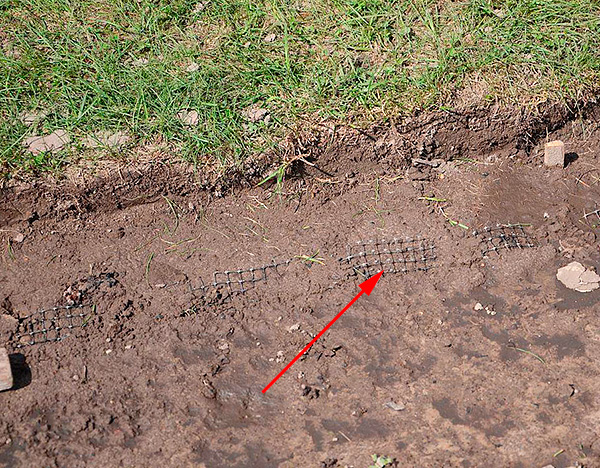
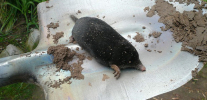


I prefer to fight them with ultrasound. For more than two years now, I have had a solar-powered mole repeller on my site. It must be placed directly above the mole's moves. And most importantly for me, do not kill anyone. Although they are harmful, it’s still a pity.
I've had it for two years now - no use!